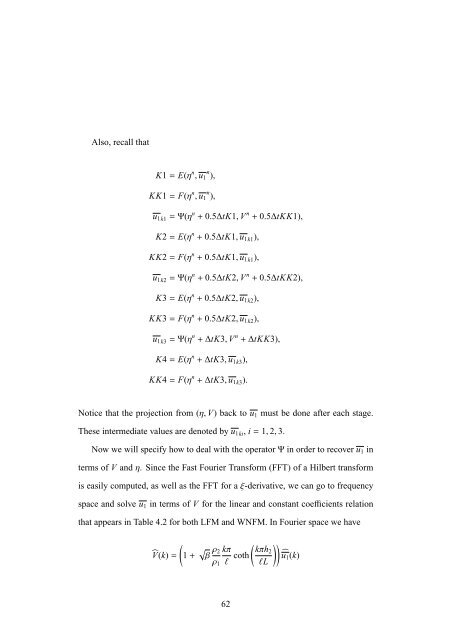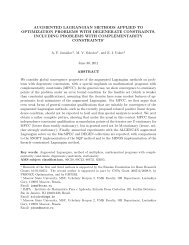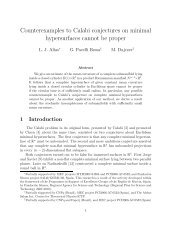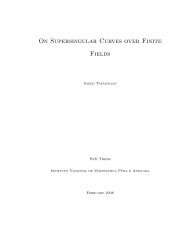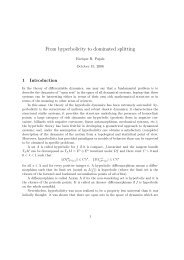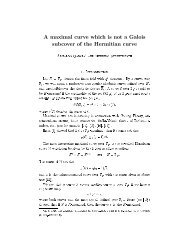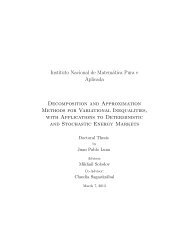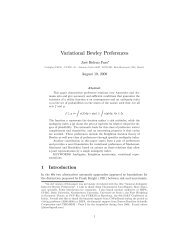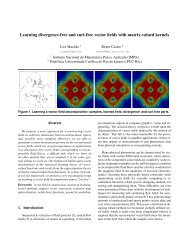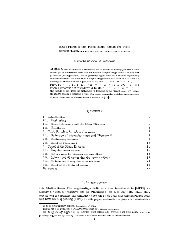a reduced model for internal waves interacting with submarine ...
a reduced model for internal waves interacting with submarine ...
a reduced model for internal waves interacting with submarine ...
You also want an ePaper? Increase the reach of your titles
YUMPU automatically turns print PDFs into web optimized ePapers that Google loves.
Also, recall that<br />
K1=E(η n , u n 1 ),<br />
KK1=F(η n , u n 1 ),<br />
u 1k1 =Ψ(η n + 0.5∆tK1, V n + 0.5∆tKK1),<br />
K2=E(η n + 0.5∆tK1, u 1k1 ),<br />
KK2=F(η n + 0.5∆tK1, u 1k1 ),<br />
u 1k2 =Ψ(η n + 0.5∆tK2, V n + 0.5∆tKK2),<br />
K3=E(η n + 0.5∆tK2, u 1k2 ),<br />
KK3=F(η n + 0.5∆tK2, u 1k2 ),<br />
u 1k3 =Ψ(η n +∆tK3, V n +∆tKK3),<br />
K4=E(η n +∆tK3, u 1k3 ),<br />
KK4=F(η n +∆tK3, u 1k3 ).<br />
Notice that the projection from (η, V) back to u 1 must be done after each stage.<br />
These intermediate values are denoted by u 1ki , i=1, 2, 3.<br />
Now we will specify how to deal <strong>with</strong> the operatorΨin order to recover u 1 in<br />
terms of V andη. Since the Fast Fourier Trans<strong>for</strong>m (FFT) of a Hilbert trans<strong>for</strong>m<br />
is easily computed, as well as the FFT <strong>for</strong> aξ-derivative, we can go to frequency<br />
space and solve u 1 in terms of V <strong>for</strong> the linear and constant coefficients relation<br />
that appears in Table 4.2 <strong>for</strong> both LFM and WNFM. In Fourier space we have<br />
̂V(k)=<br />
(<br />
1+ √ β ρ ( ))<br />
2 kπ<br />
ρ 1 l coth kπh2<br />
û 1 (k)<br />
lL<br />
62


